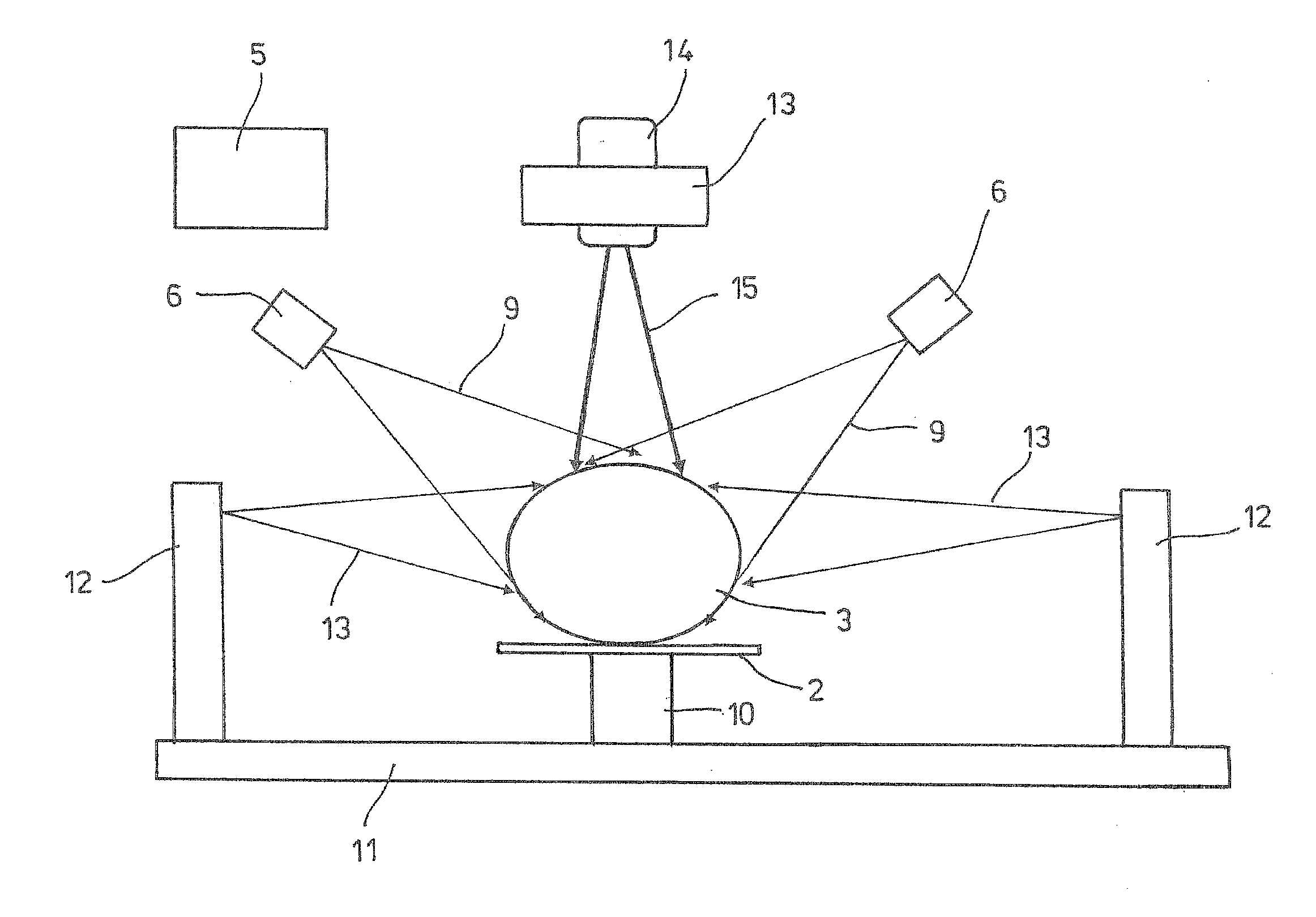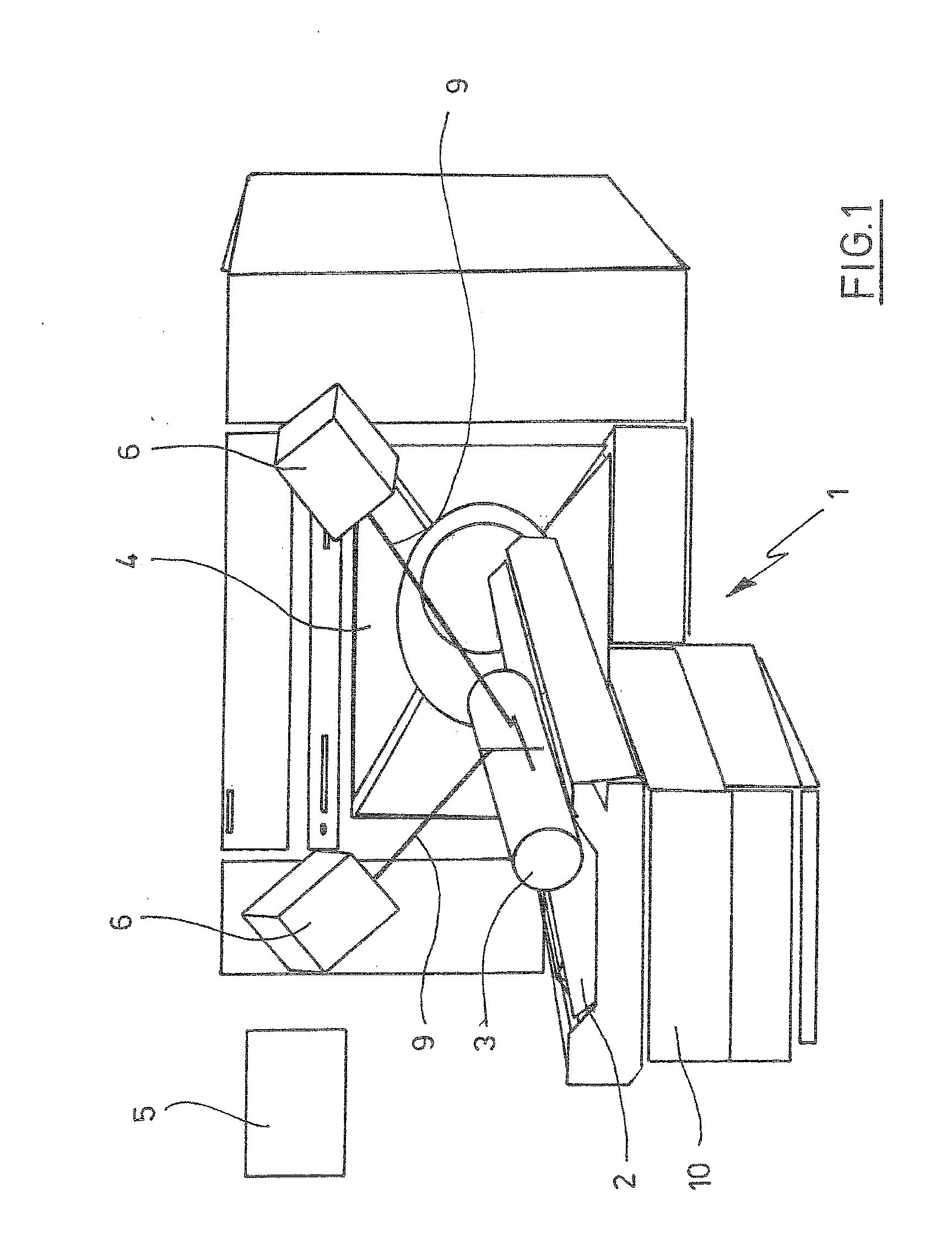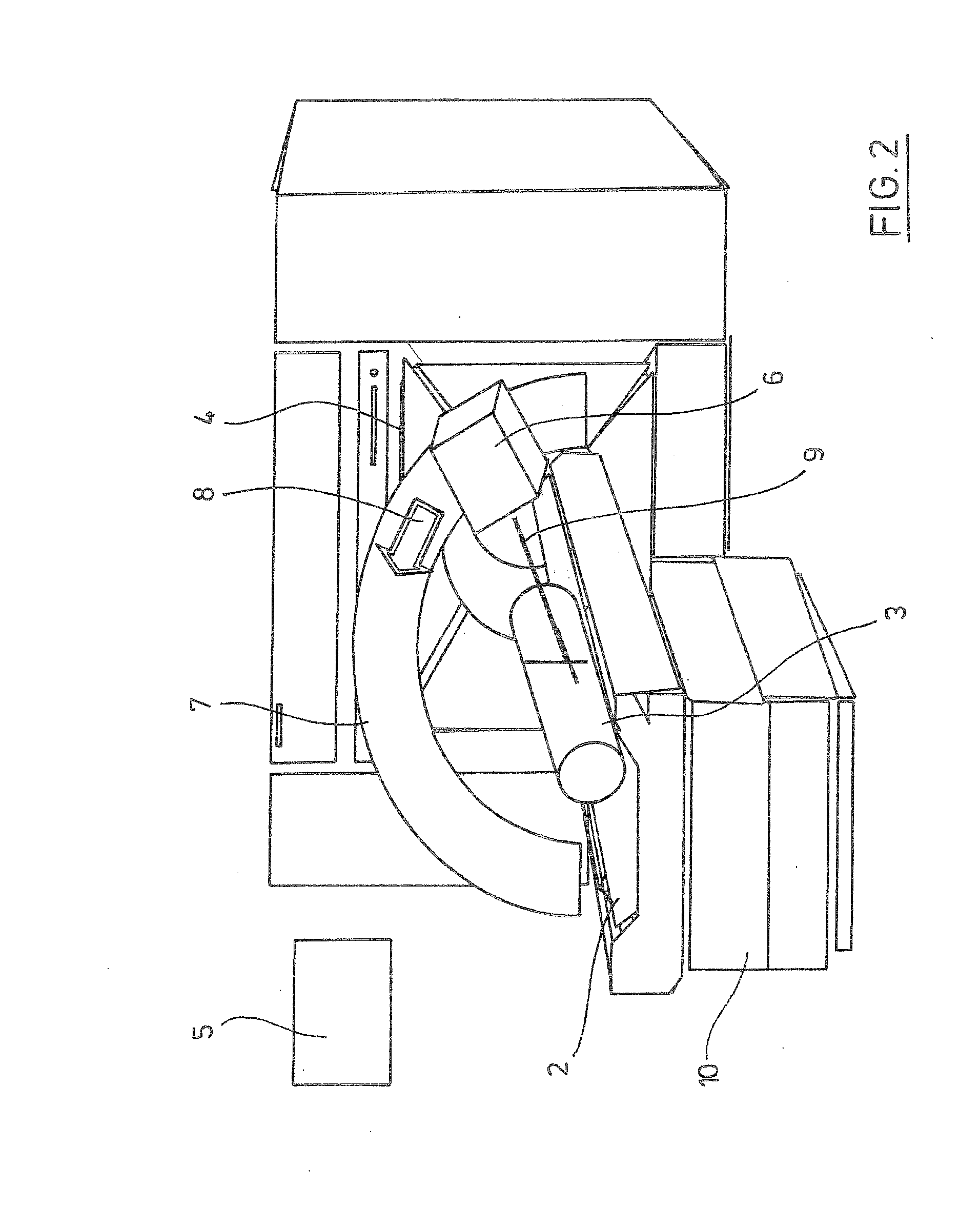Apparatus and method for the representation of an area on the surface of a patient's body
a technology of patient's body and surface, applied in the field of radiation therapy, can solve the problems of high x-ray radiation dose for the patient, high cost of ct-room usage, and high cost of described methods
- Summary
- Abstract
- Description
- Claims
- Application Information
AI Technical Summary
Benefits of technology
Problems solved by technology
Method used
Image
Examples
Embodiment Construction
[0035]While this invention may be embodied in many different forms, there are described in detail herein a specific preferred embodiment of the invention. This description is an exemplification of the principles of the invention and is not intended to limit the invention to the particular embodiment illustrated
[0036]As far as not indicated otherwise, same reference signs indicate same objects in the figures. In FIG. 1, an apparatus 1 of the invention for the representation of an area on the surface of a patient's body is depicted. The apparatus has a positioning aid 2, mounted adjustably along at least three axis by means of adjustment drives not shown in more detail, a CT table 2 in the example. On the CT table 2, a body 3, a patient's body 3 for instance, is depicted in a very schematic manner. Further, the apparatus 1 comprises a computer tomography machine 4 arranged in a housing. In this CT machine 4, CT recordings and a three dimensional sectional image of a patient based on t...
PUM
 Login to View More
Login to View More Abstract
Description
Claims
Application Information
 Login to View More
Login to View More - R&D
- Intellectual Property
- Life Sciences
- Materials
- Tech Scout
- Unparalleled Data Quality
- Higher Quality Content
- 60% Fewer Hallucinations
Browse by: Latest US Patents, China's latest patents, Technical Efficacy Thesaurus, Application Domain, Technology Topic, Popular Technical Reports.
© 2025 PatSnap. All rights reserved.Legal|Privacy policy|Modern Slavery Act Transparency Statement|Sitemap|About US| Contact US: help@patsnap.com



